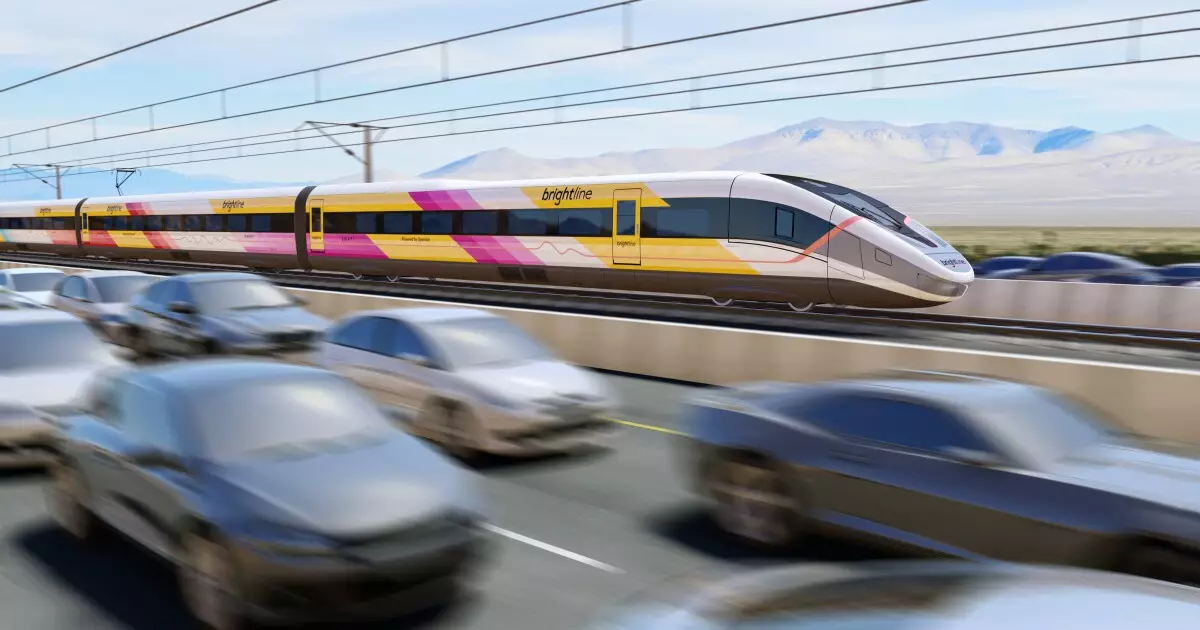The transportation landscape in the United States is on the brink of transformation, especially with the emergence of high-speed rail initiatives. Among these, Brightline West stands out as a beacon of innovation, aiming to connect Las Vegas to Southern California through an advanced high-speed electric train. Envisioned as one of the most ambitious rail projects in recent history, Brightline West is preparing to raise an impressive $2.5 billion through unrated private activity bonds (PABs), laying the foundation for its massive $12.4 billion undertaking. As the project gears up for financing, it presents a myriad of implications for transportation, economic development, and the environment.
The financing mechanism for Brightline West highlights the complexities involved in large-scale infrastructure projects. The forthcoming bond issuance is set to refinance existing debts, fund the construction phase, and provide reserve capital. However, the project is contingent on securing an additional $6 billion bank facility within a strict timeframe of 180 days. This additional financing will be critical as it would take precedence over the PABs, adding a layer of urgency to the company’s financial strategy. Notably, the risk of a mandatory redemption at a premium price of 101 if these funds are not obtained underscores the financial pressure on the project.
Such financing intricacies raise questions about the sustainability of this ambitious endeavor. Investors are particularly keen on understanding the potential return on investment and the overall feasibility of the operation. Brightline’s expectation of hitting 8.6 million riders and generating $1.4 billion in revenue by 2031 is ambitious, but not without skepticism from market analysts. The success of the project will depend heavily on reliable ridership and revenue streams, both profoundly influenced by factors like economic conditions, competition from other transports, and passenger preferences.
At the core of Brightline West’s operations is an evolution in technology and environmental responsibility. The proposed train service intends to utilize fully electric trains capable of high speeds surpassing 186 mph. This rapid transit possibility could significantly compress travel times between Las Vegas and Southern California from six hours down to just two.
However, the project’s innovation should also take into consideration environmental ramifications. While electric trains are often touted as greener alternatives to traditional modes of transport, the ecological implications of the construction phase, such as land use and energy consumption during development, need to be thoroughly assessed. It’s crucial to ensure that the modernization of transportation does not come at the cost of ecological depletion.
Political and Economic Implications
Brightline West benefits from federal support, having secured a $3 billion grant and a promise of additional financial backing through PABs last year. The current climate of bipartisan political favor toward infrastructure may provide fertile ground for successful implementation; however, challenges remain. Critics of California’s publicly financed rail projects point to budget overruns and delays, raising red flags for Brightline West. The comparison with established and proposed projects highlights the potential pitfalls of large public expenditures and the necessity for private investment-driven approaches.
Furthermore, as Brightline West aims to become the first privately owned all-electric high-speed rail service in the U.S., it could redefine the landscape of private infrastructure in transportation. Should this project succeed, it could pave the way for more private-sector involvement in rail systems across the country.
The Path Ahead: Construction and Future Endeavors
With plans to commence construction early in the year, the road ahead for Brightline West is both exciting and fraught with uncertainty. The timeline for completion is set for December 2028, but this will require overcoming numerous obstacles in financing, regulatory approvals, and project execution. After completion, the strategic goal is to pursue investment-grade ratings for the bonds, similar to their counterpart operation in Florida.
The anticipated success of Brightline West goes beyond mere transportation; it represents an opportunity for economic revitalization in regions connected by the rail line. Enhanced accessibility between major urban centers is likely to spur growth, bringing new business opportunities and elevating tourism. As such, Brightline West stands at a critical juncture, where its actions in the coming months could determine not only the project’s future but also set a precedent for high-speed rail initiatives across the nation.
Brightline West is emblematic of a broader trend pushing towards innovative and sustainable transport solutions in the U.S., with substantial financial undertakings that could redefine how Americans traverse the vast distances of the West. The unity of public interest and private investment will indeed shape the next chapter of American infrastructure.

